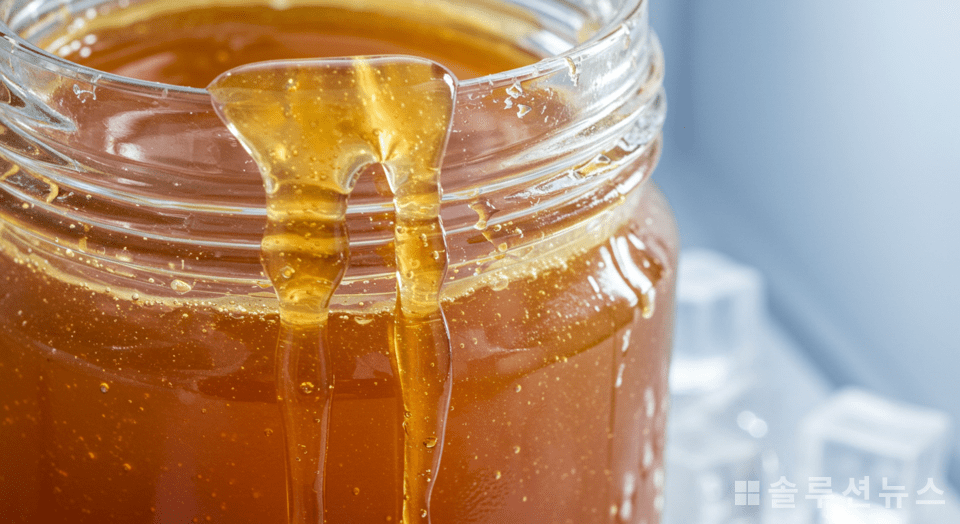Have you ever put honey in the freezer only to find that it doesn’t harden completely and remains sticky like syrup? This phenomenon begins with the fact that honey is not a simple liquid.
Honey primarily consists of fructose and glucose and contains only about 17% water on average. Thanks to its structure, with lots of sugar and little water, the water molecules in honey cannot move freely to form a regular arrangement. Hence, the molecular structure required for forming ice crystals doesn’t develop.

It’s not that honey doesn’t freeze at all. However, its freezing point is extremely low. While regular water freezes at 0°C, honey needs to reach below minus 40°C, owing to the freezing point depression effect, to become solid.
At the average temperature of a household freezer, which is around -18°C, honey doesn’t freeze at all. Instead, its viscosity increases sharply, turning it into something similar to sticky syrup or taffy.
This is because honey is a high concentration supersaturated sugar solution. The higher the sugar content, the more it interferes with the binding of water molecules, effectively preventing phase changes.

In ultra-low temperature environments below minus 50°C, honey does eventually turn solid. However, its form is different from the ‘ice’ we know.
Honey solidifies not into a crystalline structure, but as an ‘amorphous solid.’ Its molecules don’t form a regular lattice; instead, they freeze in a disordered manner similar to glass. While it could break under impact, it doesn’t possess the transparency or uniform shape of typical ice.
To completely freeze honey, special cooling equipment is required. It’s practically impossible under regular conditions.
The best way to store honey in daily life is at room temperature. Putting it in a sealed container away from sunlight at room temperature (18-24°C) allows it to remain unspoiled for years.
However, if you wish to prevent crystallization or need to store it in a hot area, freezing could be considered. In such cases, don’t fill the container to the brim to account for expansion, and ensure it is sealed to avoid moisture or odors getting in.
When defrosting, it should be done gradually. Using room temperature or even warm water for natural thawing is recommended. Microwaving or direct heating could harm the flavor and nutrients of honey.
The fact that honey doesn’t freeze isn’t just a simple matter of its physical properties. It’s an interaction of the water content, sugar structure, molecular actions, and temperature working at the boundaries of polymer physics and food chemistry.
Human experience stating that ‘honey doesn’t spoil easily,’ which dates back thousands of years, still holds valid with today’s scientific explanation.
In the next series, we will scientifically explore the interesting question of why honey can freeze once it’s boiled.